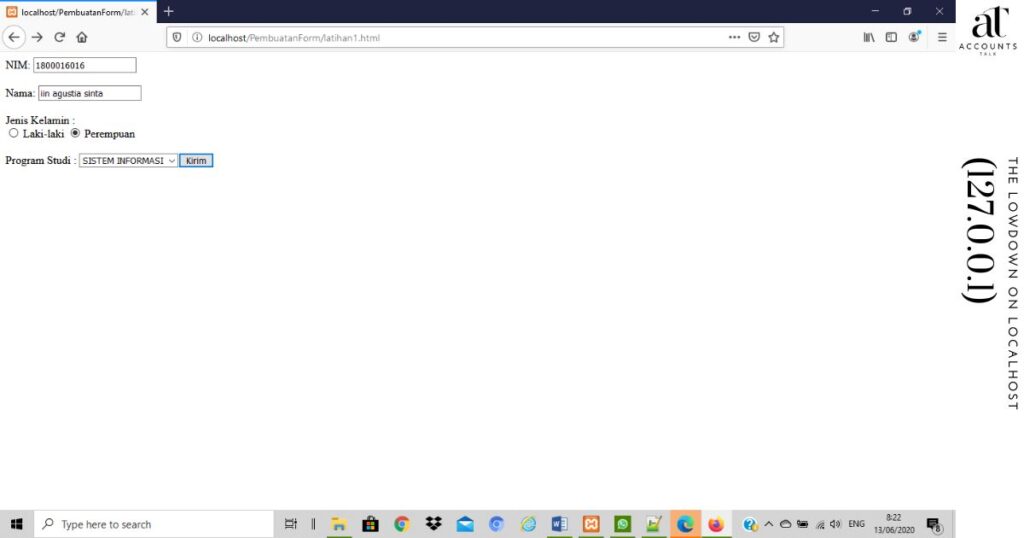In the world of software development, there’s a hidden gem that can make your life a whole lot easier: 127.0.0.1:57573.
If you’re scratching your head wondering what this cryptic combination of numbers means, don’t worry – by the end of this article, you’ll be wielding this powerful tool like a pro.
So, let’s dive into the fascinating world of local networking and discover why 127.0.0.1:57573 is the secret sauce that every developer should have in their toolkit.
The Magic Behind 127.0.0.1:57573
What the heck is 127.0.0.1:57573 anyway?
At first glance, 127.0.0.1:57573 might look like some sort of alien code. But fear not! It’s actually a combination of two important networking concepts: an IP address (127.0.0.1) and a port number (57573). Together, they create a powerful duo that’s essential for local development and testing.
The IP address 127.0.0.1 is known as the loopback address or localhost. It’s like your computer’s personal phone number that it uses to talk to itself. When you use this address, you’re telling your computer, “Hey, I want to communicate with myself!” This is incredibly useful for testing applications without needing to connect to the internet or other devices.
The port number 57573 is just one of many possible ports that can be used. Think of ports as different channels or rooms in your computer where different conversations can happen simultaneously. By specifying port 57573, you’re saying, “I want to have this particular conversation in this specific room.”
Why should you care? (Spoiler: It’s a game-changer for developers)
As a developer, understanding and using 127.0.0.1:57573 can revolutionize your workflow. It allows you to test and debug your applications in a controlled environment, without the need for an internet connection or the risk of exposing your work-in-progress to the world. This means faster development cycles, easier troubleshooting, and a more secure testing process.
The Lowdown on Localhost (127.0.0.1)

Meet your computer’s alter ego
Localhost, represented by the IP address 127.0.0.1, is like your computer’s secret identity. When you use this address, you’re creating a closed loop where your computer sends messages to itself and receives its own responses. This is why it’s often called the loopback address – it loops right back to where it started!
Why 127.0.0.1 is the superhero of local networking
The power of 127.0.0.1 lies in its ability to simulate network interactions without actually using a network. This is incredibly useful for:
- Testing web applications before deploying them to a live server
- Debugging network-related issues in a controlled environment
- Running local development servers for web projects
- Testing database connections without exposing your database to the internet
- Simulating complex network scenarios for software testing
By using 127.0.0.1, you can ensure that your application works correctly in a networked environment, all while keeping everything safely contained within your own machine.
Port 57573: The Sidekick You Didn’t Know You Needed
What’s so special about this number?
While 127.0.0.1 is the star of the show, port 57573 plays a crucial supporting role. In the world of networking, ports are used to direct different types of traffic to the right destinations. Port numbers range from 0 to 65535, with some reserved for specific purposes (like port 80 for HTTP traffic).
Port 57573 falls into the range of dynamic or private ports (49152-65535). These ports are typically used for temporary connections or for applications that don’t require a fixed, well-known port. By using a high-numbered port like 57573, you’re less likely to conflict with other services running on your machine.
How 57573 plays nice with other ports
One of the beauties of using a specific port like 57573 is that it allows you to run multiple services on your localhost without them interfering with each other. For example, you could have:
- A web server running on 127.0.0.1:8080
- A database server on 127.0.0.1:3306
- Your custom application on 127.0.0.1:57573
This separation allows you to test complex, multi-service applications all on your local machine, simulating a real-world networked environment.
127.0.0.1:57573 in Action: Real-World Examples
Web development: Your personal sandbox
For web developers, 127.0.0.1:57573 is like having a private beach to build your sandcastles. You can set up a local web server to host your site, make changes on the fly, and see the results instantly – all without affecting the live version of your site.
Database testing: No more “Oops, I broke production!”
Database administrators and developers can use 127.0.0.1:57573 to set up and test database configurations without risking production data. You can create a local instance of your database, run queries, and test your application’s data interactions, all in the safety of your local environment.
API development: Talk to yourself (in a good way)
When developing APIs, 127.0.0.1:57573 becomes your own personal echo chamber (but in a good way!). You can set up your API endpoints, test different requests and responses, and fine-tune your logic, all without needing to deploy to a staging server.
Setting Up Your 127.0.0.1:57573 Playground

Tools you’ll need (spoiler: you probably already have them)
The beauty of working with 127.0.0.1:57573 is that you don’t need much to get started. Here’s a basic toolkit:
- A computer (you’ve got this one covered!)
- A web browser
- A text editor or IDE for coding
- Any language-specific tools or frameworks you prefer (e.g., Node.js, Python, PHP)
Step-by-step guide to get your local environment humming
- Choose your development stack (e.g., LAMP for PHP, MEAN for JavaScript)
- Install the necessary software (web server, database, language runtime)
- Configure your application to listen on 127.0.0.1:57573
- Start your application
- Open your web browser and navigate to http://127.0.0.1:57573
Remember, the exact steps might vary depending on your specific setup and requirements.
Troubleshooting 127.0.0.1:57573: When Things Go Sideways
Common hiccups and how to fix them
Even in the world of local development, things can sometimes go wrong. Here are some common issues and their solutions:
- Port already in use: If you see an error saying the port is already in use, try changing to a different port number or use a tool like netstat to see what’s using the port.
- Can’t connect to 127.0.0.1:57573: Ensure your application is actually running and listening on the correct port. Check your firewall settings to make sure it’s not blocking local connections.
- Slow response times: If your local application is running slowly, it could be due to resource constraints on your machine. Try closing other applications or increasing the resources allocated to your development environment.
Debugging like a pro with 127.0.0.1:57573
When debugging, 127.0.0.1:57573 is your best friend. You can use browser developer tools, language-specific debuggers, and network monitoring tools to inspect every aspect of your application’s behavior.
Security and 127.0.0.1:57573: Keeping the Bad Guys Out
Is your localhost really local?
While 127.0.0.1 is generally considered secure (since it’s only accessible from your own machine), it’s still important to take security precautions. Remember, any application listening on 127.0.0.1 could potentially be accessed by other programs running on your computer.
Best practices for securing your 127.0.0.1:57573 setup
- Use strong authentication for your local services, even if they’re only accessible locally
- Keep your development environment updated with the latest security patches
- Be cautious when running untrusted code on your local machine
- Use a firewall to control which applications can access your network
- If you’re testing sensitive data, consider using a virtual machine or container for additional isolation
Beyond the Basics: Advanced 127.0.0.1:57573 Tricks
Multi-service orchestration on localhost
As your projects grow more complex, you might find yourself needing to run multiple services simultaneously. Tools like Docker can help you orchestrate multiple services on your local machine, all accessible via different ports on 127.0.0.1.
Simulating complex network scenarios
Network emulation tools can help you simulate various network conditions (like high latency or packet loss) while still using 127.0.0.1:57573. This can be invaluable for testing how your application behaves under different network conditions.
The Future of Local Development: Where 127.0.0.1:57573 Fits In
Emerging trends in local networking
As development practices evolve, we’re seeing trends like:
- Increased use of containerization for local development
- More sophisticated network simulation tools
- Integration of cloud services with local development environments
How 127.0.0.1:57573 is evolving with the times
While the basic concept of localhost remains the same, the ways we use it are constantly evolving. Modern development tools are making it easier than ever to leverage 127.0.0.1:57573 for complex, multi-service applications.
Conclusion: Mastering 127.0.0.1:57573 – Your Next Steps
Understanding and mastering 127.0.0.1:57573 is like having a superpower in the world of software development. It allows you to create, test, and debug your applications in a safe, controlled environment before unleashing them on the world.
As you continue your journey in software development, remember that 127.0.0.1:57573 is more than just a string of numbers – it’s a gateway to faster, more efficient, and more secure development practices. So the next time you’re starting a new project, give a little nod to 127.0.0.1:57573 – your trusty local development sidekick!
More Post:

My work is dedicated to helping individuals navigate the financial world with confidence and achieve their financial goals. Follow me for practical tips and advice on all things finance.

